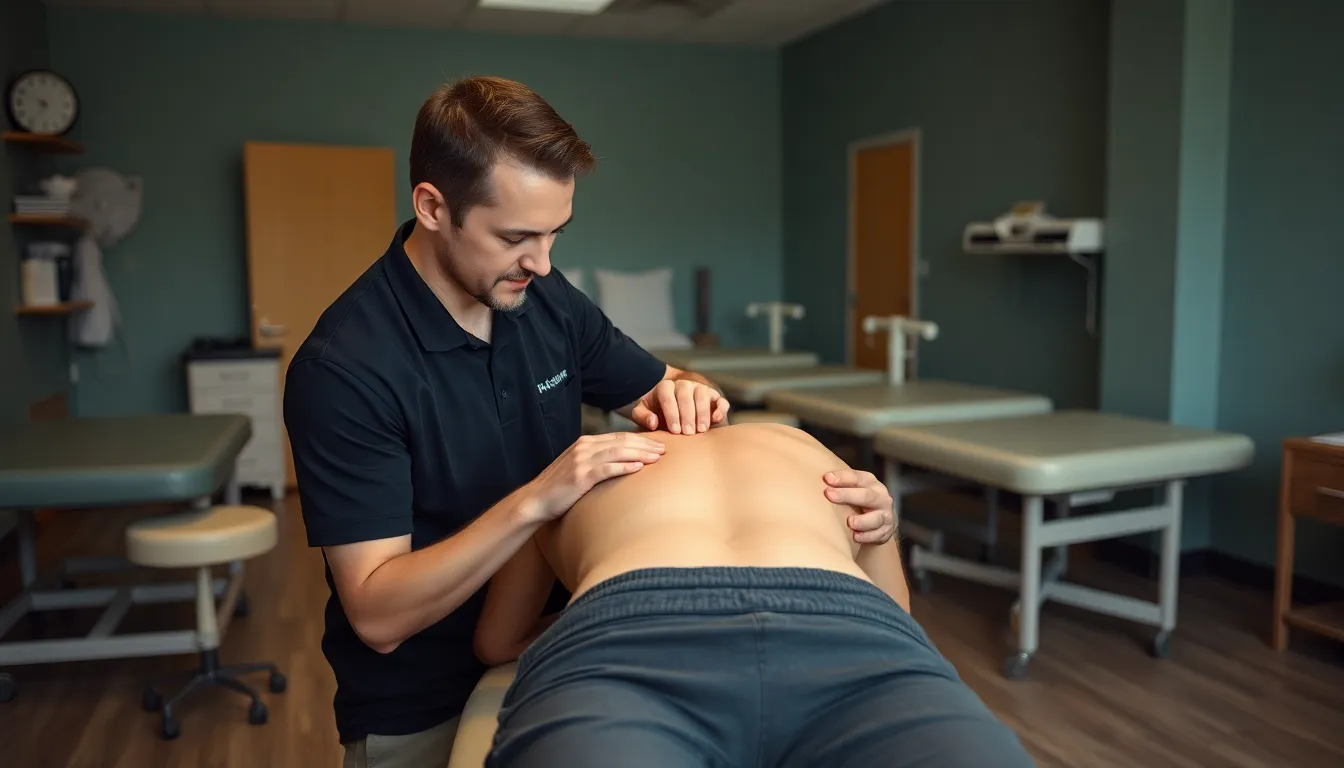Table of Contents
ToggleEver wondered why your muscles sometimes feel like they’re auditioning for a role in a horror movie? Enter dry needling, the not-so-scary solution that’s taking the world of physical therapy by storm. This technique, often mistaken for acupuncture’s quirky cousin, zeroes in on those pesky trigger points that turn everyday activities into a game of “Will I be able to walk tomorrow?”
By using thin needles to target tight knots in muscles, dry needling helps release tension and improve blood flow. It’s like giving your muscles a well-deserved spa day, minus the cucumber slices and soothing music. Curious about how this modern marvel works? Let’s dive into the science behind the needles and discover how they can turn your muscle woes into a thing of the past.
Overview Of Dry Needling
Dry needling involves inserting thin needles into specific muscle trigger points. Trigger points are hyperirritable spots within taut bands of muscle fibers that often cause pain and discomfort. Practitioners utilize this technique to release muscle tension, reduce pain, and improve overall function.
The primary goal of dry needling focuses on alleviating discomfort associated with myofascial pain syndromes. Through the insertion of needles, the technique stimulates the body’s natural healing response. This stimulation can enhance blood flow and promote the release of natural pain-relieving chemicals, such as endorphins.
Comparatively, dry needling differs from acupuncture in its methodology. Acupuncture emphasizes energy pathways, or meridians, while dry needling specifically targets muscle knots. Practitioners often choose dry needling for chronic pain conditions, tension headaches, or injuries related to sports activities.
Licensure for practitioners varies by region. He or she must receive specialized training to perform dry needling effectively and safely. Many find that the treatment results manifest quickly, often leading to immediate relief from pain and improved mobility.
Research supports the effectiveness of dry needling for various musculoskeletal conditions. Several studies indicate it may reduce pain and increase range of motion. Patients typically experience minimal discomfort during treatment, making it an attractive option for many dealing with chronic pain.
Dry needling has gained popularity as a method for managing pain without relying heavily on medication. Its ability to provide relief makes it a preferred choice for both patients and healthcare professionals.
Mechanism Of Action

Dry needling operates primarily by addressing muscle trigger points, enhancing therapeutic outcomes for myofascial pain syndromes.
Trigger Points
Trigger points are hyperirritable spots within taut muscle fibers. These trigger points can cause localized pain and discomfort, leading to difficulties in movement. Inserting needles into these areas initiates a mechanical response that facilitates muscle relaxation. This technique disrupts the muscle contraction cycle, promoting increased blood flow and reducing tension. Patients often experience immediate relief following treatment sessions. Weekly treatments may further enhance muscle recovery and decrease discomfort over time.
Neurological Effects
Dry needling elicits significant neurological responses. The technique stimulates sensory nerves embedded within muscles, which activates the body’s natural pain relief mechanisms. Pain pathways may be modulated effectively, leading to reduced perception of discomfort. Additionally, endorphin and serotonin release occurs, contributing to a heightened feeling of well-being. These neurological changes enhance pain relief and improve overall function in affected areas. As a result, individuals often report improved mobility and daily activity performance.
Benefits Of Dry Needling
Dry needling offers numerous benefits, primarily focusing on pain relief and improved range of motion. Patients often experience significant improvements after treatment.
Pain Relief
Pain relief stands as one of the most notable benefits of dry needling. This technique effectively targets trigger points that cause discomfort. Research indicates that inserting thin needles into these hyperirritable areas can lead to immediate pain reduction. Stimulation of sensory nerves promotes the body’s natural pain relief mechanisms. Patients frequently report decreased perception of discomfort after treatment. As a result, many find relief from chronic pain conditions such as tension headaches and sports-related injuries. Regular sessions enhance the cumulative effects, leading to long-lasting improvements in overall well-being.
Improved Range Of Motion
Improved range of motion represents another key advantage of dry needling. By releasing muscle tightness and enhancing flexibility, this technique allows for better mobility. The insertion of needles into taut muscle fibers promotes relaxation and increases blood circulation. Enhanced blood flow delivers necessary nutrients and oxygen to the muscles, facilitating quicker recovery. Individuals often notice a more significant ability to perform daily activities and engage in exercise. Physiotherapists recommend dry needling as part of rehabilitation programs for those recovering from injuries. The overall result leads to an increase in functional movement, making daily tasks easier and more enjoyable.
Risks And Considerations
Understanding the risks and considerations associated with dry needling is essential for prospective patients. Being aware can help individuals make informed decisions about their treatment.
Possible Side Effects
Possible side effects may include bruising at the needle insertion sites, mild soreness, or temporary discomfort during treatment. Some individuals experience minor bleeding or inflammation, which typically resolves quickly. Fatigue can occur after a session as the body adjusts to the treatment. While these effects are usually short-lived, some patients report experiencing headaches or dizziness. Monitoring one’s own response post-treatment ensures any unusual symptoms are addressed promptly. Practitioners recommend discussing any prior medical conditions to tailor the approach accordingly.
Who Should Avoid It
Certain populations should avoid dry needling. Individuals with bleeding disorders may face increased risks due to the invasive nature of the technique. Pregnant women or those with certain skin conditions also need to consider alternative therapies. Patients with a history of infections or those on blood-thinning medications should consult healthcare professionals before proceeding. Consulting a qualified practitioner ensures safety and minimizes complications for vulnerable individuals. Clear communication about health conditions helps in deciding the best treatment methods tailored to individual needs.
Dry needling stands out as a powerful technique for addressing muscle tension and discomfort. By targeting specific trigger points, it stimulates the body’s natural healing processes, leading to pain relief and improved mobility. As more individuals seek effective pain management options, dry needling’s popularity continues to grow.
It’s essential to approach this treatment with a qualified practitioner who understands the nuances of the technique. While generally safe, awareness of potential side effects and individual health considerations is crucial. With its focus on enhancing daily function and overall well-being, dry needling offers a promising avenue for those dealing with chronic pain and muscle tightness.







